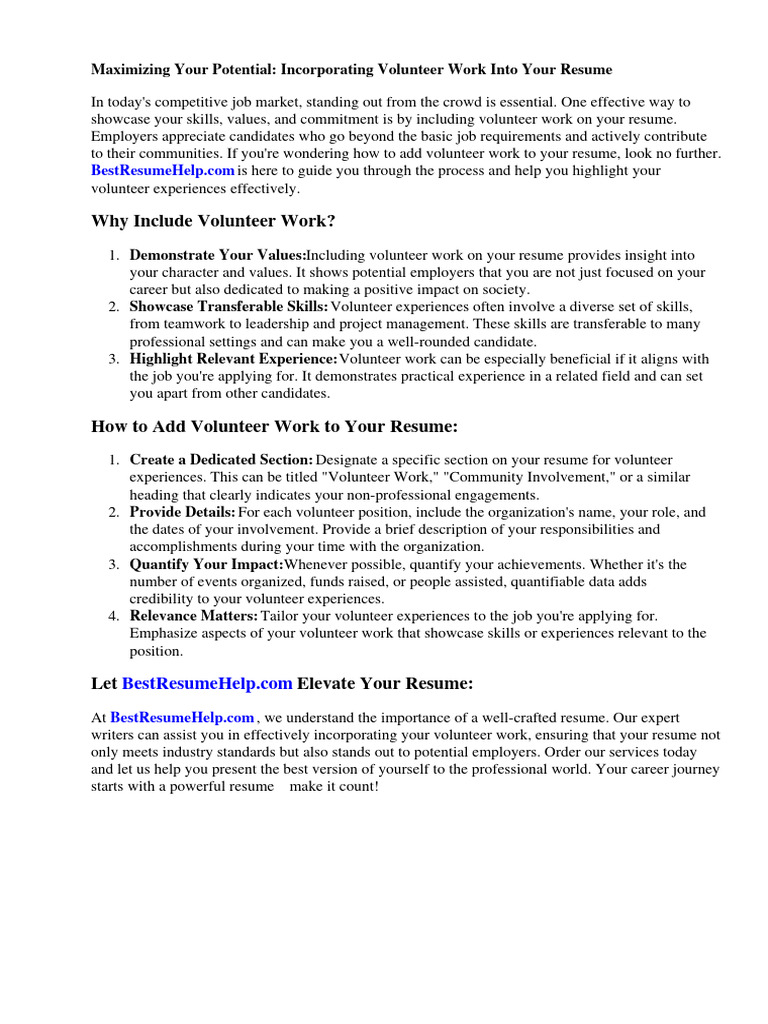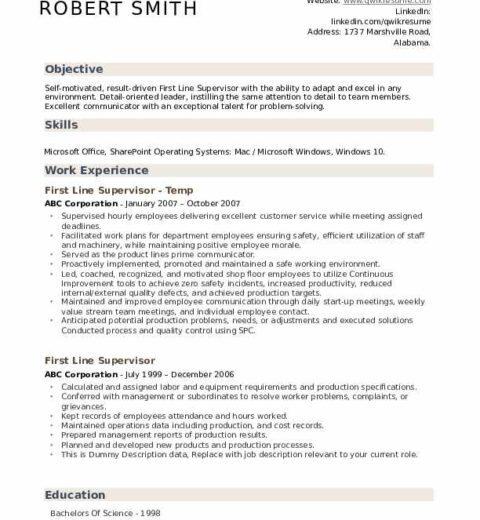In today’s competitive job market, crafting a resume that stands out requires not only showcasing professional achievements but also highlighting unique experiences that embody your character and commitment. One such experience is volunteer work. This article delves into the intricacies of incorporating volunteer activities into your resume effectively, ensuring you just don’t recount your endeavors but rather, present them as a testament to your versatility, initiative, and social responsibility.
Understanding the Importance of Volunteer Work
Volunteer work is often more than a mere footnote on a resume. It reflects qualities such as empathy, dedication, and the willingness to go above and beyond. Employers today value these attributes highly, especially in roles requiring teamwork, leadership, or client interaction. Furthermore, engaging in volunteerism often cultivates skills that are transferable to the workplace, such as communication, project management, and problem-solving abilities. Therefore, when you consider how to include volunteer activities on your resume, you’re not merely filling space; you’re underscoring your multifaceted capabilities.
Identifying Relevant Volunteer Experiences
Before you begin to compose the section for volunteer work on your resume, it’s vital to identify which experiences will resonate most with potential employers. Not all volunteering is created equal. Consider these focal points:
- Relevance to Job Description: Align your volunteer experiences with the role you’re applying for. If the position emphasizes leadership, highlight a time you led a community project.
- Skills Acquired: Reflect on the skills you developed through your volunteering efforts. For instance, working in a fundraising capacity could enhance your financial acumen.
- Impact and Contribution: Quantify your contributions where possible. Numbers and results can add weight to your narrative. Did your efforts help raise a certain amount of funds? How many people benefited from your work?
Structuring the Volunteer Section
A well-structured volunteer section can dramatically elevate your resume’s aesthetic appeal. Typically, this section can be positioned either under ‘Experience’ or as a standalone section titled ‘Volunteer Experience’ or ‘Community Involvement.’ Here’s a standard format to follow:
- Name of Organization: Clearly state the name of the organization where you volunteered.
- Your Role: Indicate your title or role, such as “Volunteer Coordinator” or “Fundraising Volunteer.”
- Dates of Involvement: Use month and year to delineate your timeframe (e.g., June 2021 – Present).
- Key Contributions: Outline your responsibilities and accomplishments in bullet points. Aim for clarity and impact. Action verbs can be particularly potent here.
For example:
ABC Nonprofit Organization — Volunteer Coordinator June 2021 – Present
- Orchestrated community events that raised over $10,000 for local initiatives.
- Directed a team of volunteers, enhancing operational efficiency by 20%.
- Established partnerships with local businesses, expanding outreach efforts.
Crafting Descriptions that Resonate
While structuring your volunteer entry is essential, the descriptions accompanying each role can make a significant difference. These descriptions should not only convey your responsibilities but also draw intrinsic connections to the competencies that make you a suitable candidate for the role at hand. Use a variety of sentence lengths to create a rhythm that keeps the reader engaged:
“In my capacity as Volunteer Coordinator, I spearheaded multiple fundraising initiatives, culminating in significant financial support for community projects. By galvanizing a diverse team of volunteers, I harnessed collective strengths, resulting in a 20% improvement in operational efficiency and a tangible difference in our neighborhood’s resources.”
Leveraging Soft Skills Through Volunteering
Volunteer work often unveils soft skills that may not be as readily apparent in conventional job roles. These encompass communication skills, emotional intelligence, and leadership qualities. When portraying these attributes on your resume, avoid superficial labels. Instead, illustrate them through your experiences:
“Collaborating with a mosaic of individuals from varied backgrounds instilled a deep sense of cultural competency and adaptability within me, vital traits in today’s diverse workplace.”
The Aesthetic Appeal: Visual Enhancements
A resume must not only convey information but also captivate visually. Use white space strategically to separate your volunteer section from others while ensuring that it flows cohesively with the overall design of your resume. Employing consistent formatting—such as font style, size, and bullet points—can enhance readability and ensure your volunteer work shines as a distinguished aspect of your professional journey.
If applicable, consider adding a skills section that categorically highlights relevant traits gleaned from your volunteer experiences, such as teamwork, leadership, communication skills, and project management.
Final Thoughts: Striking the Right Balance
Including volunteer work in your resume can significantly enhance your appeal as a candidate, providing depth that mere job descriptions cannot. It paints a portrait of an individual who is not only qualified on paper but also possesses character and commitment to societal betterment.
In our modern landscape, where the lines between professional and personal identities increasingly blur, let your resume not just narrate your experiences, but showcase your holistic persona. As you meticulously craft this narrative, remember that each line not only informs but also intrigues, inviting potential employers to delve deeper into your journey and aspirations.




